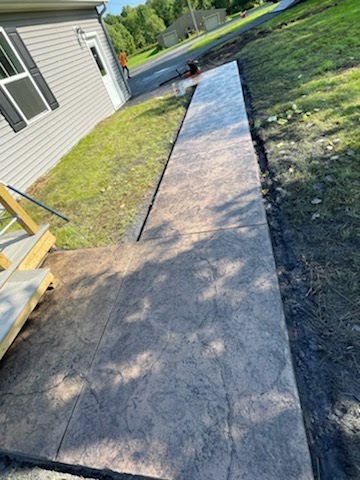How is ready-mix concrete made?Ready-mixed concrete comes in two main types: Dry and wet. The dry type comprises cement (cement), sand, water, and aggregate. Wet mix concrete consists of cement, water, aggregate, and sometimes additives such as retarders or accelerators. Both types require mixing before use. Ready-mixed concrete (RMC) is usually required at construction sites where land preparation would otherwise be done manually. RMC is also commonly used for road surfacing projects. Some ready-mixed concrete products contain additives to promote strength after setting. These raw materials include water reducers, silica fume, fly ash, pozzolans, and polymers. Minimum Cost for Ready-Mixed ConcreteThe cost of a cubic meter of ready-mixed concrete depends on the type of product being produced, its quality, and the location of construction projects. For example, if you are using high-quality concrete with long service life, then you will pay more than if you were using low-cost concrete that has a short service life. Because of these factors, it’s important to consider your needs when choosing a ready-mixed concrete supplier. You should look for one that offers minimum but competitive pricing and can meet your conditions. It’s also wise to do some research about the company’s reputation and track record. Types of Ready-Mix ConcreteDry Mix Concrete This is the most common form of ready-mix concrete. In this process, cement, sand, gravel, and water are mixed together in a concrete mixer truck. The mixture is then transported to the site of the construction project where it is poured into forms. Wet Mix Concrete This is similar to the dry mix form of concrete but requires less handling because there is no need to transfer the material from cement mixers to the job site. Instead, the ingredients are added directly to the concrete mixer truck. When the concrete is finished, it is pumped to the job site. Additives Some ready-mix concrete products have additives that help them set faster, resist corrosion, or improve their durability. These raw materials may include water-reducing agents, silica fume, fly ash, pozzolans, and polymer admixtures. Mixing Cement with Coarse Aggregates for Long-lasting Strength of Building Materials for Long-Lasting StrengthIn general, cement sets up much faster than other materials. This means that it takes longer to pour concrete. To overcome this problem, builders often add coarse aggregates to the concrete mixing process. Coarse aggregates are rocks or stones that range in size from 1/4 inch to 2 inches. They provide support for cubic yards of cement matrix and allow the concrete to develop greater compressive strength. When building materials are exposed to moisture, they begin to rust due to a chemical reaction. Rust stains can ruin the appearance of buildings and cause expensive repairs. To prevent this, builders often apply a coating called paint to the exterior surfaces of buildings. But paints aren’t always effective. Builders often choose to coat steel reinforcing bars with zinc oxide to protect against rust. However, zinc oxide isn’t very durable. So, builders use an alternative material of choice: galvanized steel. Galvanizing protects the steel by creating a layer of iron oxide on the surface. Galvanized steel resists rust better than uncoated steel. And it lasts longer than zinc oxide. Ready-mix concrete suppliers typically offer two types of concrete: standard and premium. Standard concrete contains only a mixture of cement, sand, and gravel. Premium concrete adds additional ingredients in concrete such as polymers, air entrainment agents, and fibers. It can be used for many different applications and mixing phases using high-grade equipment. It helps reduce noise levels, improves thermal conductivity, and reduces shrinkage. It’s especially useful for constructing roads and bridges. Ready-mix concrete suppliers usually sell premixes that contain all the necessary ingredients. Premixes are convenient because they eliminate the need to measure out basic ingredients individually. However, premixes don’t always work well. For example, if you order a premix that doesn’t contain enough cement, the resulting concrete will not harden properly. It’s best to buy premixes that contain at least 65% cement. If you want to know how much cement is in your premix, ask the supplier. Premixes also vary in terms of quality. Some premixes are more consistent than others. The consistency of a premix depends on the manufacturer. The most important thing when buying premixes is to ensure that the product meets industry standards. Ask the supplier about its performance records using building equipment. If you’re unsure what kind of premix to purchase, ask the supplier for advice. He or she should be able to tell you whether your needs match one of the premixes available. What Type of Water is used for Concrete MixtureWater is essential for the concrete mixture. There are three main types of water used for concrete mixtures: freshwater, seawater, and recycled water. Fresh water is the purest form of water. It does not have any impurities. Sea water has salt in it. Salt makes concrete stronger. When mixed with fresh water, the salt dissolves into the water. Recycled water is wastewater that has been treated. This type of water may have some contaminants like oil, grease, and other chemicals. These substances must be removed before using the water for mixing concrete. Fresh water is generally preferred over sea water and recycled water because it costs less. Concrete Mixing Project DesignA project design on demand includes information about the size and shape of a structure. Design professionals use the information to determine the amount of concrete needed based on the property owner's design specifications. In addition, a project design describes the location of reinforcement bars (bars that reinforce the concrete). Reinforcement bars are placed inside the concrete so that it won't crack. They help prevent cracks from forming and bring surface durability properties counteracting adverse conditions.
A project design also includes information in terms of strength required by the structure. Strength requirements depend on the application using specialized equipment. For instance, a bridge requires greater strength than an average building in terms of ground conditions. In fact, a typical house requires almost no strength. Designers use this information to calculate the supply of material needed for major projects. Finally, a project design provides details about the placement of reinforcing steel. Steel rods are placed in the concrete after it's poured. They provide additional support for the concrete. Steel rods are typically placed every 4 inches along the length of the wall. You can find project designs online from design communities. You can also download them from manufacturers' websites. Some project designs include drawings showing where reinforcement bars and steel rods should be located. When designing a project, designers consider several factors. For example, they take into account the climate where the structure will be built. They also consider the load the structure will bear. Load refers to the weight of people or equipment that the structure will hold up. When determining the strength of a structure, engineers look at the loads that are applied to the structure for quality assurance purposes. Engineers measure these loads by applying weights to the structure. Then, they record how much force the structure holds up against those weights. The engineer compares the recorded forces to the strength of the materials used to build the structure. The results of the tests show the maximum load that the structure can withstand without breaking down. This information helps the engineer determine whether the structure was designed correctly.
7 Comments
1/30/2023 12:34:44 am
Ready-mix concrete is a type of concrete that is manufactured in a factory or batching plant, according to a set recipe, and then delivered to a worksite, by truck mounted transit mixers. This results in a precise mixture, allowing specialty concrete mixtures to be developed and implemented on construction sites. The raw materials used to make ready-mix concrete include cement, water, aggregates such as sand or gravel, admixtures, and pigment if required. The mix is prepared in a central mixing plant and then delivered in a freshly mixed state to the construction site.
Reply
Thanks for helping me understand those ready-mix concrete suppliers would have premised that they sell which have the necessary ingredients for it which are convenient. I will share this information with my husband because we might need this kind of product for the house. And we will also hire professionals to help us fix the damaged wall in our garage.
Reply
3/18/2023 02:01:44 am
It's great to know that there would be ready-mix concrete with premises which means that they would have all the necessary ingredients in them. In that case, I will be looking at my option and asking professionals what we actually need. It's because we would be needing a part of our wall fixed with this material to strengthen it again.
Reply
3/28/2023 01:43:04 am
I love that you said that an appropriate concrete mixture would need a proper amount of water depending on the cement size. My best friend told me last night that he and his brother were hoping to find a residential concrete mix that could provide quality cement for their house project. He asked if I had any idea what would be the best option. Thanks to this helpful article, I'll tell them it will be much better if they consult a ready-mix industry for more information about their concrete mix.
Reply
3/28/2023 02:57:44 am
Thank you for letting me know that strength requirements rely on the application utilizing specialized equipment. My friend is working on a project that needs ready-mix concrete. I should advise him to look for a contractor with access to quality materials.
Reply
4/26/2023 03:07:10 pm
It's interesting to know that you'd use different types of water when handling ready-mix concrete. I have a cousin who wants to renovate his backyard and use concrete to create a few benches and a patio next weekend, so I think he'd benefit from reading your post. Thanks for the information on how freshwater is cost-effective for a concrete project.
Reply
Thanks for helping me understand how essential water is when it comes to ready-mix concrete, and the purest form is freshwater because it doesn't have any purities which is why it is preferred over other options. I will keep that in mind when I hire concrete contractors this coming August to build my driveway. After five years of living on this property, I finally have the budget to get this done, and I want the project to have no issues or repair needs in just a few days, weeks, or months after the installation.
Reply
Leave a Reply. |
|

